-
 Bitcoin
Bitcoin $86,269.0684
-1.60% -
 Ethereum
Ethereum $2,343.0002
-3.53% -
 Tether USDt
Tether USDt $0.9990
-0.02% -
 XRP
XRP $2.2343
-0.26% -
 BNB
BNB $610.2070
-1.36% -
 Solana
Solana $140.2900
2.66% -
 USDC
USDC $0.9999
0.01% -
 Dogecoin
Dogecoin $0.2097
2.03% -
 Cardano
Cardano $0.6749
1.28% -
 TRON
TRON $0.2293
0.44% -
 Chainlink
Chainlink $15.6409
2.67% -
 Litecoin
Litecoin $130.0225
5.77% -
 Avalanche
Avalanche $23.1207
6.87% -
 Sui
Sui $2.9119
0.02% -
 Stellar
Stellar $0.2903
0.56% -
 Shiba Inu
Shiba Inu $0.0...01473
4.49% -
 Toncoin
Toncoin $3.4685
-1.49% -
 UNUS SED LEO
UNUS SED LEO $9.1117
0.91% -
 Hedera
Hedera $0.2009
4.25% -
 Polkadot
Polkadot $5.0702
6.72% -
 MANTRA
MANTRA $7.2791
-2.91% -
 Hyperliquid
Hyperliquid $20.4871
4.40% -
 Bitcoin Cash
Bitcoin Cash $301.9445
3.53% -
 Ethena USDe
Ethena USDe $0.9993
0.00% -
 Dai
Dai $0.9998
0.01% -
 Bitget Token
Bitget Token $4.1134
0.14% -
 Uniswap
Uniswap $8.1934
1.97% -
 Monero
Monero $212.7258
-3.23% -
 NEAR Protocol
NEAR Protocol $3.1179
3.74% -
 Aptos
Aptos $6.1616
10.59%
The blockchain technology behind Artrade (ATR) coin
The ATR blockchain utilizes advanced technology to provide key features like decentralization, immutable ledgers, and multiple validation layers, ensuring the integrity and security of the ATR ecosystem.
Jan 02, 2025 at 03:44 pm

Key Points:
- Artrade (ATR) Coin: Overview and Blockchain Technology
- Key Features and Advantages of the ATR Blockchain
- ATR Blockchain Consensus Mechanism and Security
- Applications and Use Cases of the ATR Blockchain
- Potential Benefits of Using the ATR Blockchain
- Potential Challenges and Limitations of the ATR Blockchain
- Frequently Asked Questions about the ATR Blockchain
The Blockchain Technology Behind Artrade (ATR) Coin
Artrade (ATR) coin is a decentralized digital currency that utilizes blockchain technology as its underlying infrastructure. The ATR blockchain is a distributed ledger that records transactions in a secure and transparent manner, ensuring the integrity and reliability of the ATR ecosystem. Here is a comprehensive overview of the blockchain technology behind the ATR coin:
1. Key Features and Advantages of the ATR Blockchain:
- Decentralization: The ATR blockchain is not controlled by any central authority, eliminating the potential for censorship, manipulation, or fraud. Transactions are verified and recorded by a network of distributed nodes, ensuring the autonomy and resilience of the system.
- Immutable Ledger: The ATR blockchain is an immutable ledger, meaning that once a transaction is recorded, it cannot be altered or reversed. This provides a high level of security and trust, as the integrity of the data is maintained over time.
- Transparency: All transactions on the ATR blockchain are publicly visible, allowing for full transparency and accountability. This promotes trust and encourages responsible behavior within the ATR ecosystem.
- Efficiency: The ATR blockchain is designed to be highly efficient, processing transactions quickly and securely. This enhances the user experience and reduces transaction times, making ATR a practical medium of exchange.
2. ATR Blockchain Consensus Mechanism and Security:
- Proof-of-Stake (PoS) Consensus: The ATR blockchain utilizes a Proof-of-Stake (PoS) consensus mechanism, where validators are chosen based on the amount of ATR coins they hold. This incentivizes long-term commitment and encourages network participation, enhancing the overall stability and security of the blockchain.
- Multiple Validation Layers: The ATR blockchain incorporates multiple validation layers, including a core validation layer and a guardian validation layer. This layered approach further enhances security and reduces the risk of malicious attacks.
- Configurable Parameters: The PoS consensus mechanism allows for customizable parameters, such as block time, reward distribution, and node participation requirements. This flexibility enables the ATR blockchain to adapt to changing network conditions and optimize efficiency.
3. Applications and Use Cases of the ATR Blockchain:
- Digital Payments: ATR can be used as a medium of exchange for efficient and secure digital payments. Its decentralized nature eliminates intermediaries, providing lower transaction fees and quicker settlement times.
- Decentralized Finance (DeFi): The ATR blockchain supports the development and deployment of DeFi applications, such as decentralized exchanges, lending platforms, and stablecoins. This expands the functionality of the ATR ecosystem and enables users to access a wider range of financial services.
- Blockchain-Based Solutions: The ATR blockchain can be utilized to create and deploy industry-specific blockchain solutions, such as supply chain management, identity verification, and healthcare applications. Its flexibility and customization capabilities make it suitable for diverse industries seeking to improve efficiency and transparency.
4. Potential Benefits of Using the ATR Blockchain:
- Reduced Transaction Costs: The decentralized nature of the ATR blockchain eliminates intermediaries, significantly reducing transaction fees compared to traditional financial systems.
- Enhanced Security: The immutable ledger, PoS consensus mechanism, and multiple validation layers provide robust security, safeguarding user funds and transactions from potential threats.
- Increased Efficiency: The ATR blockchain's efficient processing capabilities accelerate transaction times, enabling faster and more reliable digital payments and other blockchain-based applications.
- Transparency and Accountability: The public visibility of transactions on the ATR blockchain promotes transparency and holds participants accountable for their actions, fostering trust and responsible behavior.
5. Potential Challenges and Limitations of the ATR Blockchain:
- Scalability: As the ATR blockchain gains popularity and adoption, it may face scalability challenges in handling increasing transaction volumes. Further development and optimization may be required to address this issue.
- Adoption Rate: The widespread adoption of the ATR blockchain relies on acceptance and usage by users, businesses, and industry stakeholders. Active promotion and education initiatives are essential to spur adoption.
- Regulatory Compliance: The regulatory landscape for cryptocurrencies and blockchain technology is still evolving globally. Compliance with evolving regulations may impose additional requirements on the ATR blockchain and its ecosystem.
FAQs:
Q: How is the ATR coin secured?
A: The ATR blockchain utilizes a Proof-of-Stake consensus mechanism and multiple validation layers, providing robust security for transactions and safeguarding user funds.
Q: What are some of the potential use cases of the ATR blockchain?
A: The ATR blockchain supports digital payments, DeFi applications, and blockchain-based solutions for supply chain management, identity verification, and healthcare.
Q: What advantages does the ATR blockchain offer over traditional financial systems?
A: The ATR blockchain offers reduced transaction costs, enhanced security, increased efficiency, and transparency, making it a compelling alternative to centralized financial systems.
Q: How does the ATR blockchain ensure transparency and accountability?
A: All transactions on the ATR blockchain are publicly visible, enabling participants to monitor activity and hold each other accountable, fostering trust and responsible behavior.
Q: What challenges might the ATR blockchain face in the future?
A: The ATR blockchain may face scalability challenges, adoption hurdles, and the need to comply with evolving regulatory requirements in the future.
Disclaimer:info@kdj.com
The information provided is not trading advice. kdj.com does not assume any responsibility for any investments made based on the information provided in this article. Cryptocurrencies are highly volatile and it is highly recommended that you invest with caution after thorough research!
If you believe that the content used on this website infringes your copyright, please contact us immediately (info@kdj.com) and we will delete it promptly.
- Panshibi (SHIBI) Exceeds $1 Million In Presale, Gaining Unstoppable Momentum
- 2025-02-27 21:10:32
- Discover if Pepe's hype is truly dead after a 20 percent weekly drop. Get the latest Pepe price prediction and see how Dawgz AI Presale could change the game.
- 2025-02-27 21:10:32
- The US Securities and Exchange Commission (SEC) has dropped its investigation of Gemini and will not pursue an enforcement action.
- 2025-02-27 21:05:33
- A Monero (XMR) Whale Just Invested $50,000 Into This Viral Meme Coin
- 2025-02-27 21:05:33
- XYZVerse's Path to Recovery Could Be Its Ticket to G.O.A.T. Status
- 2025-02-27 21:05:33
- When it comes to Dogwifhat price prediction, opinions are all over the place.
- 2025-02-27 21:05:33
Related knowledge
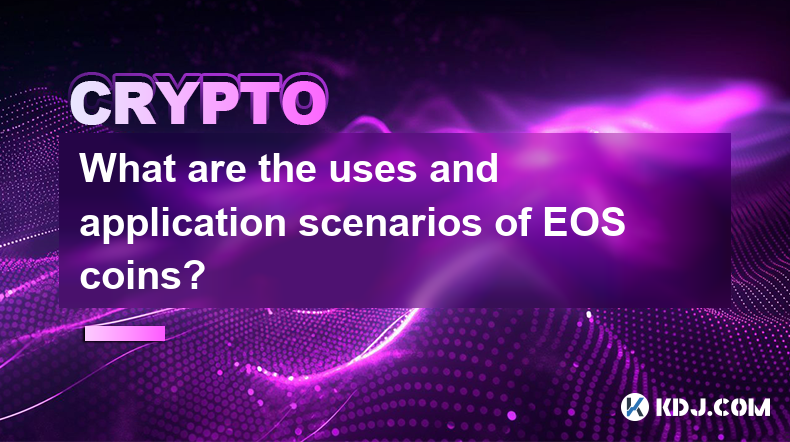
What are the uses and application scenarios of EOS coins?
Feb 26,2025 at 09:54pm
EOS: Decentralized Infrastructure for Scalable Blockchain ApplicationsKey Points:EOS enables the creation and deployment of decentralized applications with unparalleled scalability and efficiency.Its unique architecture features a high-throughput blockchain with zero transaction fees and the ability to process millions of transactions per second.EOS is ...
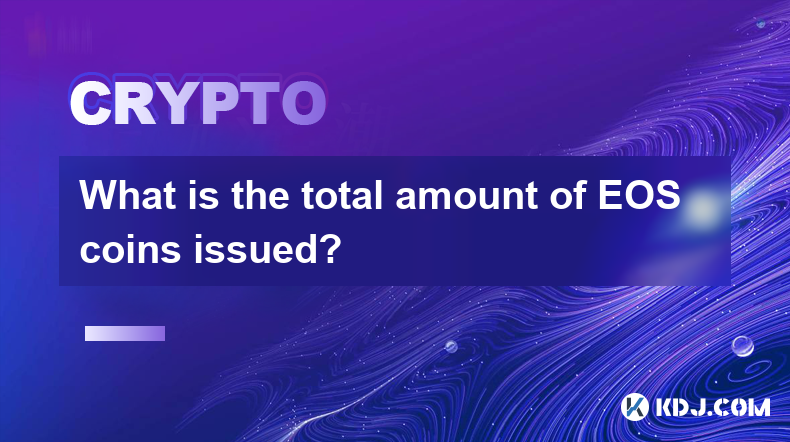
What is the total amount of EOS coins issued?
Feb 26,2025 at 06:24pm
Key PointsTotal Supply: Understand the concept of initial supply and its impact on EOS tokenomicsSupply Dynamics: Explore the various factors that affect EOS supply, including inflation and staking incentivesMarket Capitalization vs. Circulating Supply: Delve into the nuances between these metrics and their significance in token valuationDistribution an...
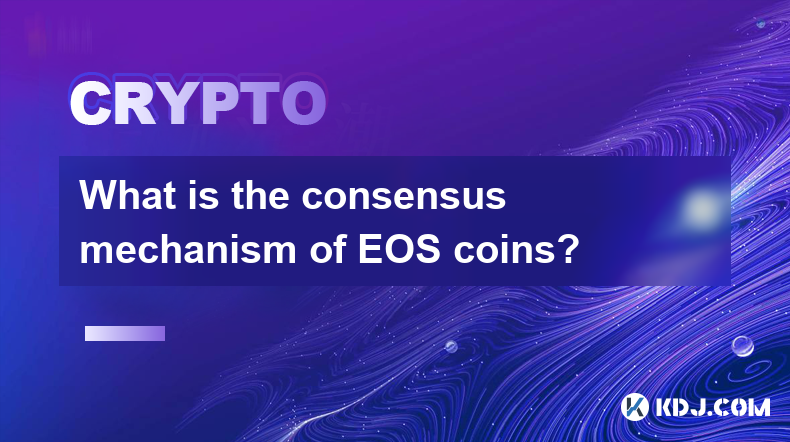
What is the consensus mechanism of EOS coins?
Feb 26,2025 at 11:19am
Key Points:EOSIO: The Foundation of EOS's Consensus MechanismDPOS: Delegated Proof-of-StakeBlock Producer ElectionsContinuous Block ProductionBlock Validation and IrreversibilityConsensus and Fork PreventionCommunity Governance and VotingWhat is the Consensus Mechanism of EOS Coins?EOS, an innovative blockchain platform, employs a unique consensus mecha...
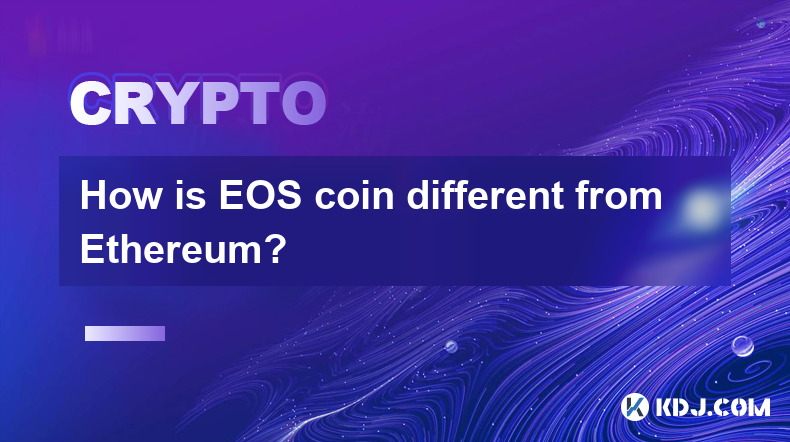
How is EOS coin different from Ethereum?
Feb 26,2025 at 10:48am
Key Points:Overview of EOS and EthereumDifferences in Consensus MechanismsAdvantages and Limitations of Each PlatformUse Cases and Target AudiencesComparison of Transaction Fees and ScalabilityCommunity Support and Development ActivityHow is EOS Coin Different from Ethereum?1. Overview of EOS and EthereumEOS and Ethereum are two of the most popular bloc...
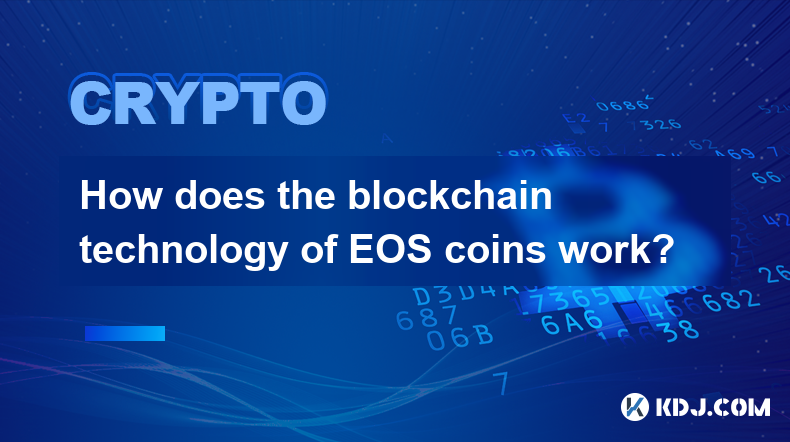
How does the blockchain technology of EOS coins work?
Feb 25,2025 at 11:13pm
Key PointsEOS is a blockchain platform that provides a high-throughput and scalable solution for decentralized applications.EOS uses a delegated proof-of-stake (DPoS) consensus mechanism to elect block producers and maintain the blockchain.EOSIO, the open-source software that powers EOS, offers a range of developer tools and features to facilitate the c...
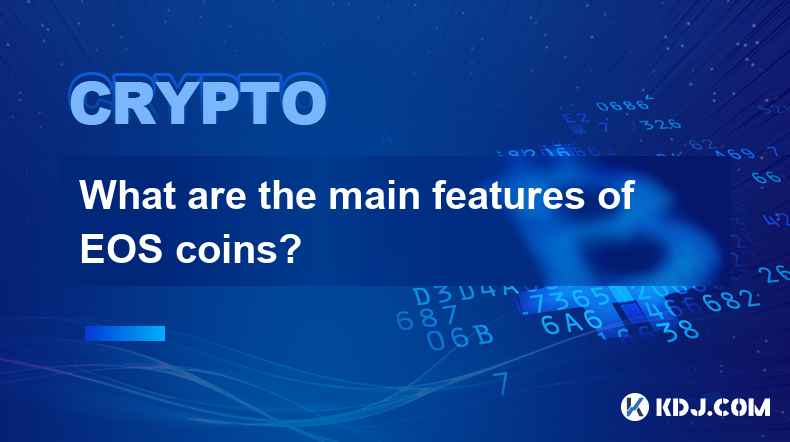
What are the main features of EOS coins?
Feb 27,2025 at 04:36pm
Key Points:EOS is a decentralized blockchain platform designed for building scalable and secure applications.EOS uses a unique consensus mechanism called Delegated Proof of Stake (DPoS), which improves transaction speed and efficiency.EOS has a robust ecosystem with a wide range of decentralized applications (dApps) and tools.EOS is known for its low tr...

What are the uses and application scenarios of EOS coins?
Feb 26,2025 at 09:54pm
EOS: Decentralized Infrastructure for Scalable Blockchain ApplicationsKey Points:EOS enables the creation and deployment of decentralized applications with unparalleled scalability and efficiency.Its unique architecture features a high-throughput blockchain with zero transaction fees and the ability to process millions of transactions per second.EOS is ...

What is the total amount of EOS coins issued?
Feb 26,2025 at 06:24pm
Key PointsTotal Supply: Understand the concept of initial supply and its impact on EOS tokenomicsSupply Dynamics: Explore the various factors that affect EOS supply, including inflation and staking incentivesMarket Capitalization vs. Circulating Supply: Delve into the nuances between these metrics and their significance in token valuationDistribution an...

What is the consensus mechanism of EOS coins?
Feb 26,2025 at 11:19am
Key Points:EOSIO: The Foundation of EOS's Consensus MechanismDPOS: Delegated Proof-of-StakeBlock Producer ElectionsContinuous Block ProductionBlock Validation and IrreversibilityConsensus and Fork PreventionCommunity Governance and VotingWhat is the Consensus Mechanism of EOS Coins?EOS, an innovative blockchain platform, employs a unique consensus mecha...

How is EOS coin different from Ethereum?
Feb 26,2025 at 10:48am
Key Points:Overview of EOS and EthereumDifferences in Consensus MechanismsAdvantages and Limitations of Each PlatformUse Cases and Target AudiencesComparison of Transaction Fees and ScalabilityCommunity Support and Development ActivityHow is EOS Coin Different from Ethereum?1. Overview of EOS and EthereumEOS and Ethereum are two of the most popular bloc...

How does the blockchain technology of EOS coins work?
Feb 25,2025 at 11:13pm
Key PointsEOS is a blockchain platform that provides a high-throughput and scalable solution for decentralized applications.EOS uses a delegated proof-of-stake (DPoS) consensus mechanism to elect block producers and maintain the blockchain.EOSIO, the open-source software that powers EOS, offers a range of developer tools and features to facilitate the c...

What are the main features of EOS coins?
Feb 27,2025 at 04:36pm
Key Points:EOS is a decentralized blockchain platform designed for building scalable and secure applications.EOS uses a unique consensus mechanism called Delegated Proof of Stake (DPoS), which improves transaction speed and efficiency.EOS has a robust ecosystem with a wide range of decentralized applications (dApps) and tools.EOS is known for its low tr...
See all articles

















































































